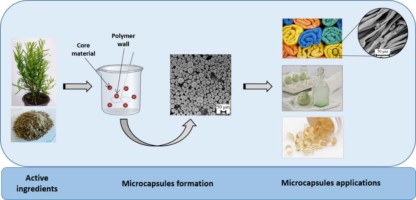
Isabel Maria Martins, Associate Laboratory LSRE-LCM | November 07, 2019 – 16h30 | FEUP Sala B024
The use of emergent technologies, such as microencapsulation, adds important gains and introduces new features and innovative properties in the products. The use of this methodology provides an important tool for several industries, enabling protection and controlled release of several active ingredients. The encapsulation of essential oils in a core-shell material or matrix has been investigated for various reasons, such as, protection from oxidative decomposition, evaporation or simply to support them. A large number of methods have been suggested for microcapsule’s production, in order to be adapted to different types of active ingredients and wall materials, as well as, to generate particles with various sizes, wall thickness and permeability, thus adjusting the release rate of the active ingredient. In this seminar, an overview regarding the main properties of active ingredients such as the essential oils, as well as the description of some microencapsulation techniques, with a particular emphasis on its final application, will be presented.
Heterogeneous photocatalysis appears as a green sustainable alternative to the industrial production of valueadded chemicals, operating under environmentally friendly conditions. Graphite-like carbon nitride (GCN) is an interesting semiconductor material, with metal-free character and absorption ability in the visible range spectrum. In the present work, GCN was obtained through co-polymerization of dicyandiamide with citric acid (CA). The photocatalytic performance of the photocatalysts (GCN-zCA) was tested both in the selective production of panisaldehyde (AAD) and hydrogen (H2) evolution, under visible-LED irradiation (λmax = 420 nm). The synthesis process promoted changes in the optical, electronical and morphological properties of GCN. Modified materials presented enhanced productions of AAD and H2 when compared with bulk GCN.
Isabel M. D. Martins graduated in Chemical Engineering in 2006, at Faculty of Engineering of University of Porto (FEUP). She joined the Associate Laboratory LSRE-LCM in 2006 where she was a member of the research team. Her research focused on the encapsulation of essential oils for textile and cosmetic applications. In 2012, and also at FEUP, she obtained the PhD in Chemical and Biological Engineering under the topic “Microencapsulation of Thyme Oil by Coacervation: production, characterization and release evaluation”, followed by a Post-Doctoral scholarship until 2014. From 2014 to 2018, she worked at Devan Micropolis, SA as a strategic R&D scientist and she was responsible for the synthesis and characterization of new formulations for textiles applications with health and wellness benefits. In 2019, she returned to LSRE-LCM to work under the project Valor Natural – Natural Resources through the Extraction of High Added Value Ingredients for Applications in the Food Industry.
[Host: Maria Eugénia Macedo, Associate Laboratory, LSRE-LCM]
Image credits: Isabel Martins.
